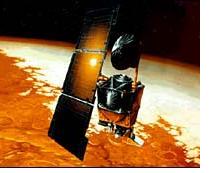 On 23 September 1999 the Mars Climate Orbiter, a space probe launched on 11 December 1998 and designed to go into orbit around Mars, was lost after its rockets were fired correctly but steered the probe too close to Mars, causing it to overheat.
On 23 September 1999 the Mars Climate Orbiter, a space probe launched on 11 December 1998 and designed to go into orbit around Mars, was lost after its rockets were fired correctly but steered the probe too close to Mars, causing it to overheat. On 23 September 1999 the Mars Climate Orbiter, a space probe launched on 11 December 1998 and designed to go into orbit around Mars, was lost after its rockets were fired correctly but steered the probe too close to Mars, causing it to overheat.
On 23 September 1999 the Mars Climate Orbiter, a space probe launched on 11 December 1998 and designed to go into orbit around Mars, was lost after its rockets were fired correctly but steered the probe too close to Mars, causing it to overheat.
A subsequent investigation revealed that the engineering team that designed the rocket system had used imperial (English) units - foot and pound - for its calculations, while the NASA engineers responsible for the programming had been working on the basis of SI units - metre and kilogram.
The $125 million Climate Orbiter was to relay data from an upcoming partner mission called Mars Polar Lander, which was scheduled to set down on Mars in December following Climate Orbiter's arrival. The two space probes were designed to help understand Mars' water history and the potential for life in the planet's past.
The USA are a member of the Metre Convention of 1875 and thus obliged to use the SI system in science. In 1975 Congress passed the Metric Conversion Act for the purpose of finally introducing the metric system into daily life and economic transactions. The Act set up a Metric Conversion Board but provided no binding timetable.
The argument of the business community in the USA against conversion to metric is twofold. It is argued that the great size of the internal market obviates the need for identical measures with other countries, and that the introduction of the metric system would open the USA market to foreign competition.
As a result the science industry - for example the national space organization NASA - does all its calculations in SI units but builds its hardware in imperial units. Occasional errors such as the one that led to the loss of the Mars Climate Orbiter will therefore occur again.